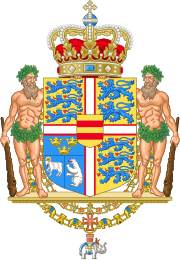1972 Danish European Communities membership referendum
In the article titled 1972 Danish European Communities membership referendum, a topic of great relevance today is addressed, which has generated a wide debate and has aroused the interest of society in general. Throughout this article, different aspects related to 1972 Danish European Communities membership referendum will be analyzed, from its origin to its impact on current society. Likewise, the different opinions and positions that exist around 1972 Danish European Communities membership referendum will be examined, in order to offer readers a complete and objective vision of the topic. In addition, relevant data, studies and research will be presented that will contribute to enriching knowledge about 1972 Danish European Communities membership referendum and deepening its understanding. Without a doubt, this article will be very useful for those interested in acquiring greater knowledge about 1972 Danish European Communities membership referendum and understanding its importance in today's society.
| ||||||||||||||||||||||
Should Denmark join the European Economic Community? | ||||||||||||||||||||||
| Results | ||||||||||||||||||||||
|---|---|---|---|---|---|---|---|---|---|---|---|---|---|---|---|---|---|---|---|---|---|---|
| ||||||||||||||||||||||
 Results by nomination district and constituency
Yes: 50–55% 55–60% 60–65% 65–70% 70%+ No: 50–55% 55–60% 60–65% 65–70% 70%+ | ||||||||||||||||||||||
 |
|---|
A referendum on joining the European Economic Community was held in Denmark on 2 October 1972. The result was 63.3% in favour with a turnout of 90.1%. The law that Denmark should be member of the EEC was passed on 11 October 1972, and Denmark became a member on 1 January 1973.
Background
According to Article 20, section 2 of the Danish constitution, any law that makes limitations to the sovereignty of the Danish state (as membership of the EEC would) must be passed in the Danish parliament with 5/6 of the parliament's members voting for the law. If a majority of members vote for the law, but not by 5/6 majority, and the government wishes to uphold the suggested law, the law can still be passed in a public referendum, as was the case in the 1972 referendum.
According to a 2022 study, municipalities that experienced more German-inflicted violence during the German occupation of Denmark in WWII were more likely to vote against joining the EEC.
Results
| Choice | Votes | % |
|---|---|---|
| For | 1,958,043 | 63.3 |
| Against | 1,135,755 | 36.7 |
| Invalid/blank votes | 19,323 | – |
| Total | 3,113,121 | 100 |
| Registered voters/turnout | 3,453,763 | 90.1 |
| Source: Nohlen & Stöver | ||
References
- ^ Dieter Nohlen & Philip Stöver (2010) Elections in Europe: A data handbook, p524 ISBN 978-3-8329-5609-7
- ^ Nohlen & Stöver, p534
- ^ Danmarkshistorien: Ja til EF 1972 Archived 2007-06-10 at the Wayback Machine Ministry of Education of Denmark (in Danish)
- ^ a b English version of the Danish constitution Archived February 27, 2008, at the Wayback Machine
- ^ Aaskoven, Lasse (2022). "Foreign Occupation and Support for International Cooperation: Evidence from Denmark". World Politics. 74 (2): 285–325. doi:10.1017/S004388712200003X. ISSN 0043-8871. S2CID 248267466.